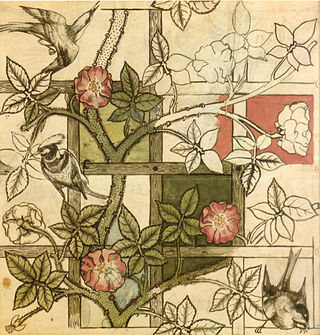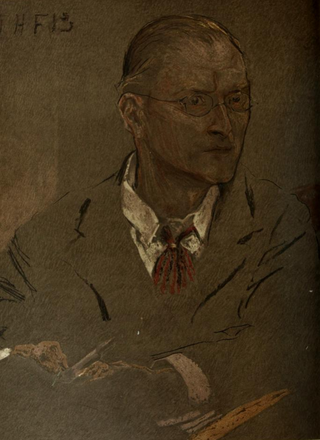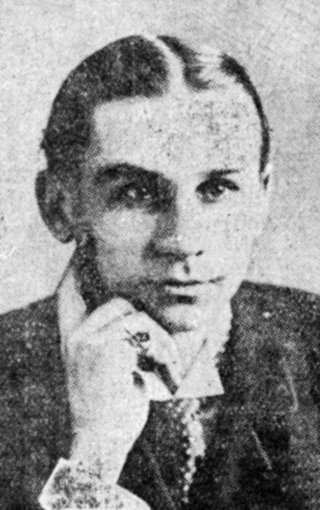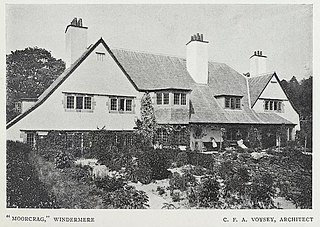
The Arts and Crafts movement was an international trend in the decorative and fine arts that developed earliest and most fully in the British Isles and subsequently spread across the British Empire and to the rest of Europe and America.

The Hog's Back is a hilly ridge, part of the North Downs in Surrey, England. It runs between Farnham in the west and Guildford in the east.

Russell Sturgis was an American architect and art critic of the 19th and early 20th centuries. He was one of the founders of the Metropolitan Museum of Art in 1870.

Charles Francis Annesley Voysey was an English architect and furniture and textile designer. Voysey's early work was as a designer of wallpapers, fabrics and furnishings in a Arts and Crafts style and he made important contribution to the Modern Style, and was recognized by the seminal The Studio magazine. He is renowned as the architect of several country houses.

Julian Codman, was an American lawyer who was a vigorous opponent of Prohibition who was also involved with the Anti-Imperialist League.

Arthur Heygate Mackmurdo was a progressive English architect and designer, who influenced the Arts and Crafts Movement, notably through the Century Guild of Artists, which he set up in partnership with Herbert Horne in 1882. He was the pioneer of the Modern Style and in turn global Art Nouveau movement.

Richard Clipston Sturgis, generally known as R. Clipston Sturgis, was an American architect based in Boston, Massachusetts.

Herbert Tudor Buckland was a British architect, best known for his seminal Arts and Crafts houses, the Elan Valley model village, educational buildings such as the campus of the Royal Hospital School in Suffolk and St Hugh's College in Oxford.

Russell Sturgis was a Boston merchant active in the China trade, and later head of Baring Brothers in London.

Robert Kerr was a British architect, architectural writer and co-founder of the Architectural Association.

Howard Overing Sturgis was an English-language novelist who wrote about same-sex love. Of American parentage, he lived and worked in Britain.

Julian Russell Sturgis was a British-American novelist, poet, librettist and lyricist.

Walton Hall is a country house in Walton, Warrington, Cheshire, England. It is recorded in the National Heritage List for England as a designated Grade II listed building. The hall and its surrounding garden and grounds are owned and administered by Warrington Borough Council.
Henry Parkman Sturgis was an American-born banker in England and a Liberal politician.

Prior's Field is an independent girls' boarding and day school in Guildford, Surrey in the south-east of England. Founded in 1902 by Julia Huxley, it stands in 42 acres of parkland, 34 miles south-west of London and adjacent to the A3 road, which runs between the capital and the south coast.
Sir Mark Beresford Russell Grant-Sturgis KCB was a British civil servant who served as Assistant Under-Secretary for Ireland.

Moor Crag is a Grade I listed house near Bowness-on-Windermere in South Lakeland, Cumbria, England, overlooking Windermere. It lies in the north of the parish of Cartmel Fell. It was designed by C. F. A. Voysey in 1898-1899 as a holiday home for J. W.Buckley of Altrincham.

The Church of St Luke, Sheen, Staffordshire is a Grade II* listed Anglican church. Its origins are of the 14th century, but it was largely rebuilt in the mid-19th century, firstly by C. W. Burleigh, and then by William Butterfield. The church, and its associated parsonage, were the last buildings recorded by Nikolaus Pevsner in his Buildings of England series, when he concluded the series in 1974 with his Staffordshire volume, finishing a project begun in 1945.
William Bainbridge Reynolds was a British art metal worker and an architect who was active from 1870 to 1932.

The architecture of Bedford Park in Chiswick, West London, is characterised largely by Queen Anne Revival style, meaning an eclectic mixture of English and Flemish house styles from the 17th and 18th centuries, with elements of many other styles featuring in some of the buildings.



















